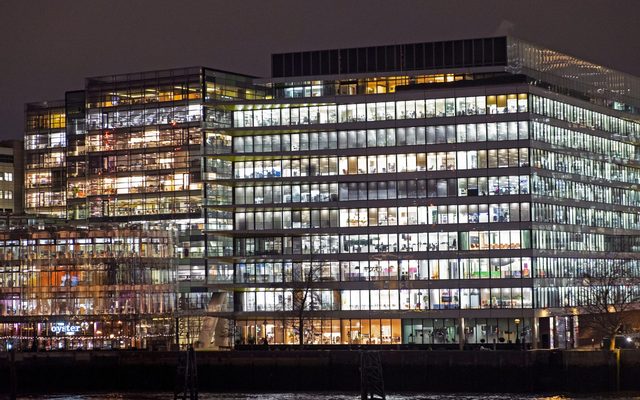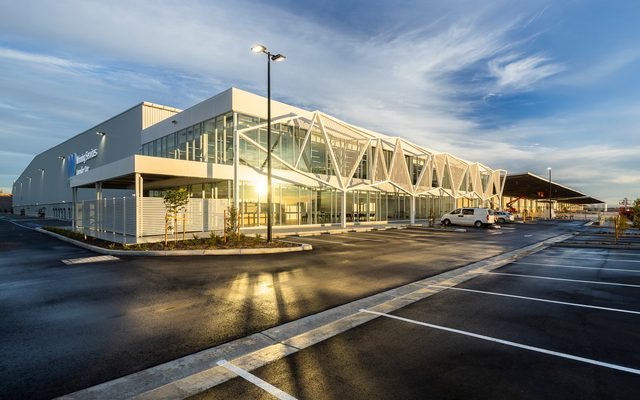This article is from the Australian Property Journal archive
SINGAPORE, Sydney, Wellington, Perth and Melbourne are the Asia-Pacific’s top five green-rated cities for commercial real estate, according to a new Knight Frank report, while landlords’ assets in the region are facing increased vulnerability due to extreme weather events.
The top-ranked cities in Knight Frank’s Rising Capital in Uncertain Times report all shared common traits – low carbon emissions per person, ample green spaces, and low urbanisation pressures.
However, while landlords across the Asia Pacific are beginning to consider environmental, social and corporate governance factors in greater numbers, the early impacts of climate change on weather events will need to be noted by investors – as seen currently in the Sydney events, which follow flowing in northern NSW and south east Queensland already this year.
“While the real estate sector in APAC is adapting to the risks of these events, investors should still brace themselves for the impact of climate risks and erratic weather changes on their investment portfolios,” said Christine Li, Knight Frank’s head of research, Asia-Pacific, said:
She said the index used to measure green cities is closely aligned to what investors are interested in when benchmarking their portfolio and individual buildings. The number of green buildings in the green score reflects the willingness and proactiveness of the local government and organisations in pushing for a more sustainable built environment, she said, and highlights those cities with an established market of investible green assets.
Rounding out the top 10 are Auckland, Shenzhen, Hong Kong, Beijing and Tokyo. Three factors common to the top 10 are the amount of green space; the availability of sustainably rated commercial buildings; and urbanisation pressures.
“Singapore stands out due to a comprehensive green building certification scheme and an ambitious plan to become a low-carbon built environment,” Li said. Singapore has a “80-80-80 in 2030” plan, which targets to green 80% of the buildings in Singapore, for 80% of new developments to be super low energy, and aim for best-in-class buildings to achieve at least 80% improvement in energy efficiency over the 2005 baseline by 2030.
“Liveable cities like Sydney and Wellington boast ample green spaces that have been critical for inhabitants during prolonged lockdowns, providing a reprieve from highly urbanised lifestyles,” Li noted.
The report highlighted the NSW government’s early-pandemic announcement of $5 million to develop Greater Sydney’s green canopy by planting thousands of new trees across the city, with assistance from Greening Australia and Landcare NSW.
“The government is cognizant of the effect of green spaces and how their people require them within the urban environment. The plan complements the sentiments on the ground as the people in Sydney are turning to green spaces to seek reprieve during the pandemic,” it said.
According to Hort Innovation’s Government Greening COVID 19 – Pulse Check research, 60% of survey participants “said urban greening, including tree-planting, maintenance, potted colour displays, and other capital works projects like new parks, were now considered ‘essential; and expenditure would remain the same or be brought forward”, while 87% of respondents “noticed a positive shift in community attitudes toward urban green space”.
Developers are also on board with the greening initiatives, according to the report.
“Green spaces are traditionally, and unsurprisingly, an after-thought in most developments as they are not considered profitable. However, with such shift in emphasis on nature and green spaces, developers are slowly adapting to the change in preference. For instance, in the development of Central Park, Sydney, the design of the green components was prioritised before anything else. It comprises lawns, a pathway, artworks, seating, plants, trees, sandstone trims and heritage brickwork and designed in collaboration with Jeppe Aagaard Andersen.”
According to the report, awareness of the impact of climate issues is gaining traction in the region, with more tenants opting for buildings with green features, and as demand currently outstrips supply, landlords can command up to a 10% premium on sustainably-rated buildings. That follows RICS research that shows more than half of property players believe that green and sustainable buildings achieve a rent and a price premium. More than one-third believe that the rent and price premium stands at up to 10%; around 15% judge it to be higher still.
In response, developers are likely to expedite the development of sustainable buildings to capture the rising demand for green buildings, according to Knight Frank.
“Investors are placing more emphasis on strategies that maximise their returns from their ESG efforts,” Neil Brookes, Knight Frank’s head of global capital markets said.
“We have seen a swift uptake of ESG metrics benchmarking in the APAC region in recent years, motivated by the imminent need to curtail climate risks.”
“With debt cost soaring, yield-seeking investors will also be compelled to move up the risk curve to secure the desired spreads. Many will gravitate to more active asset management strategies, such as repurposing and value-add plays, to generate alpha.
“Adopting sustainable measures not only enhances portfolio security but has been proven to add a positive price premium to assets.”




